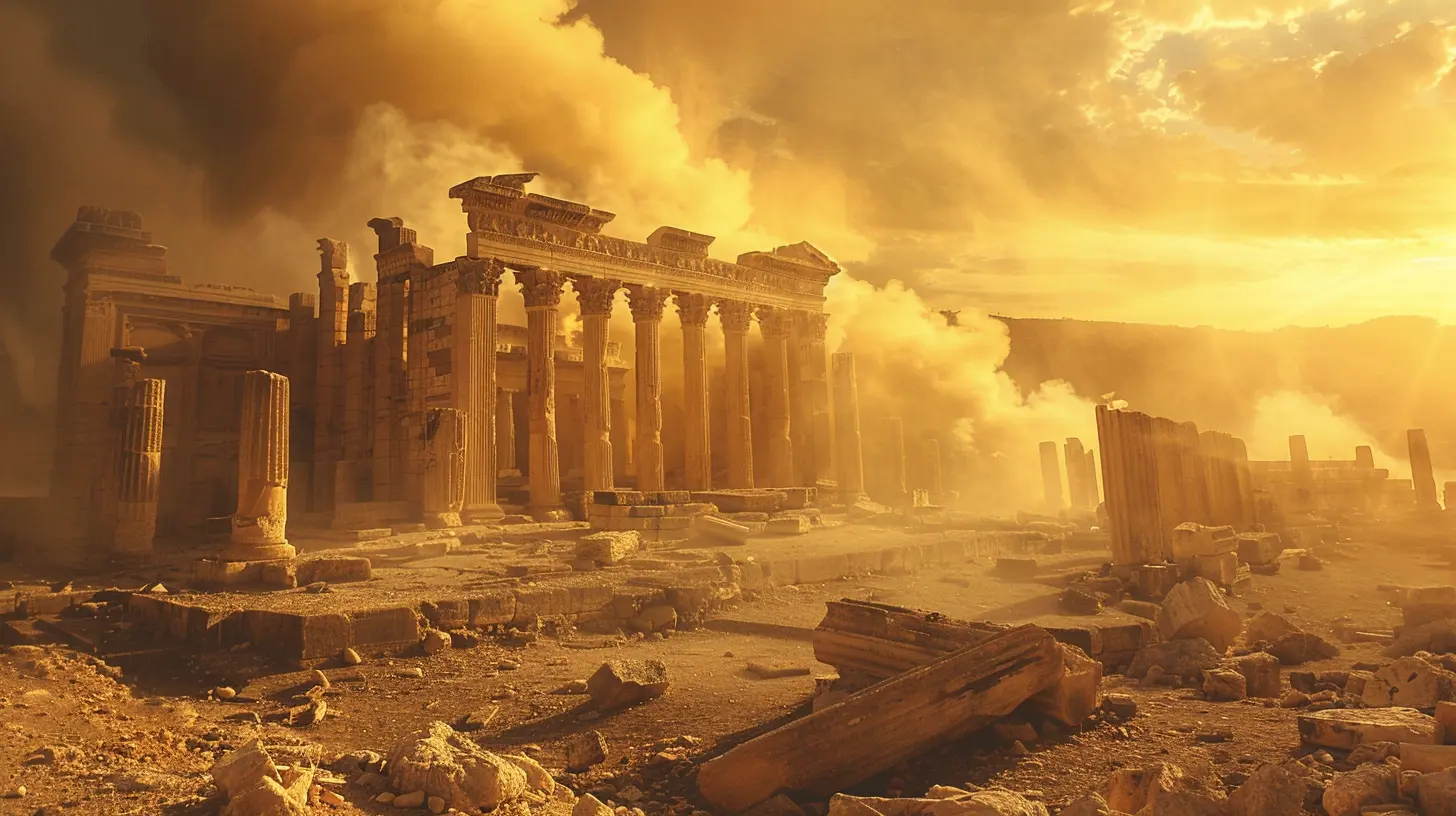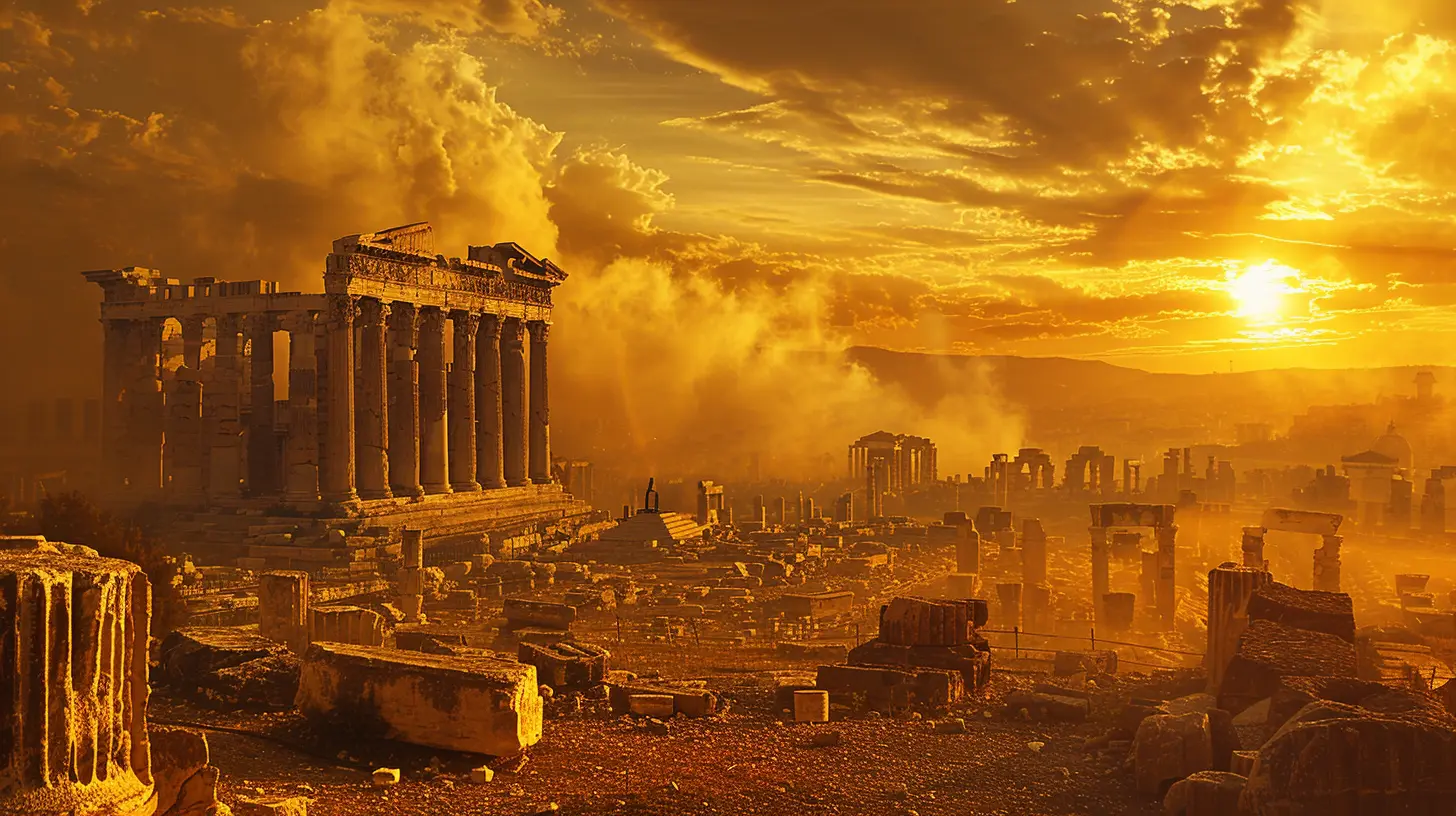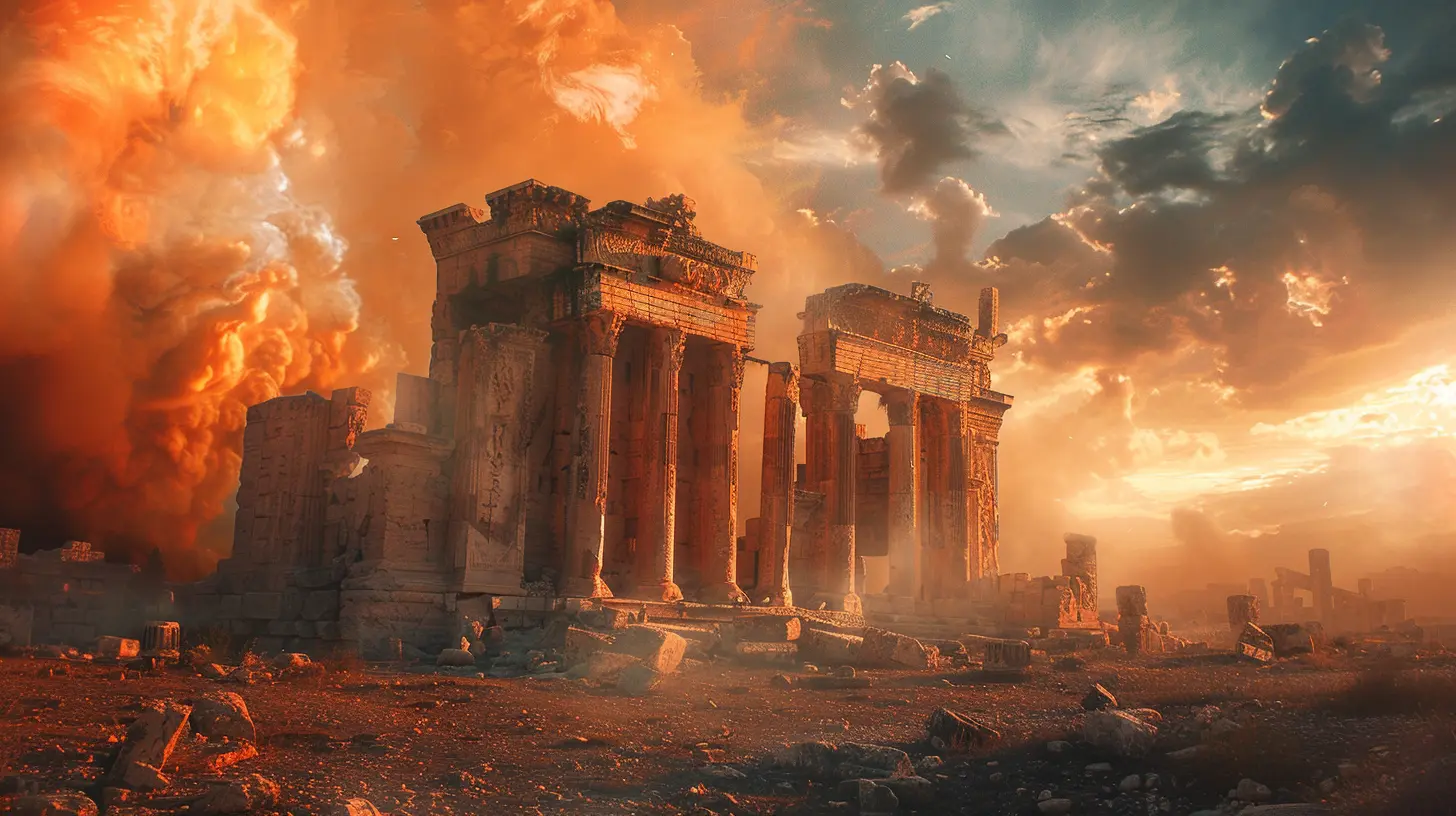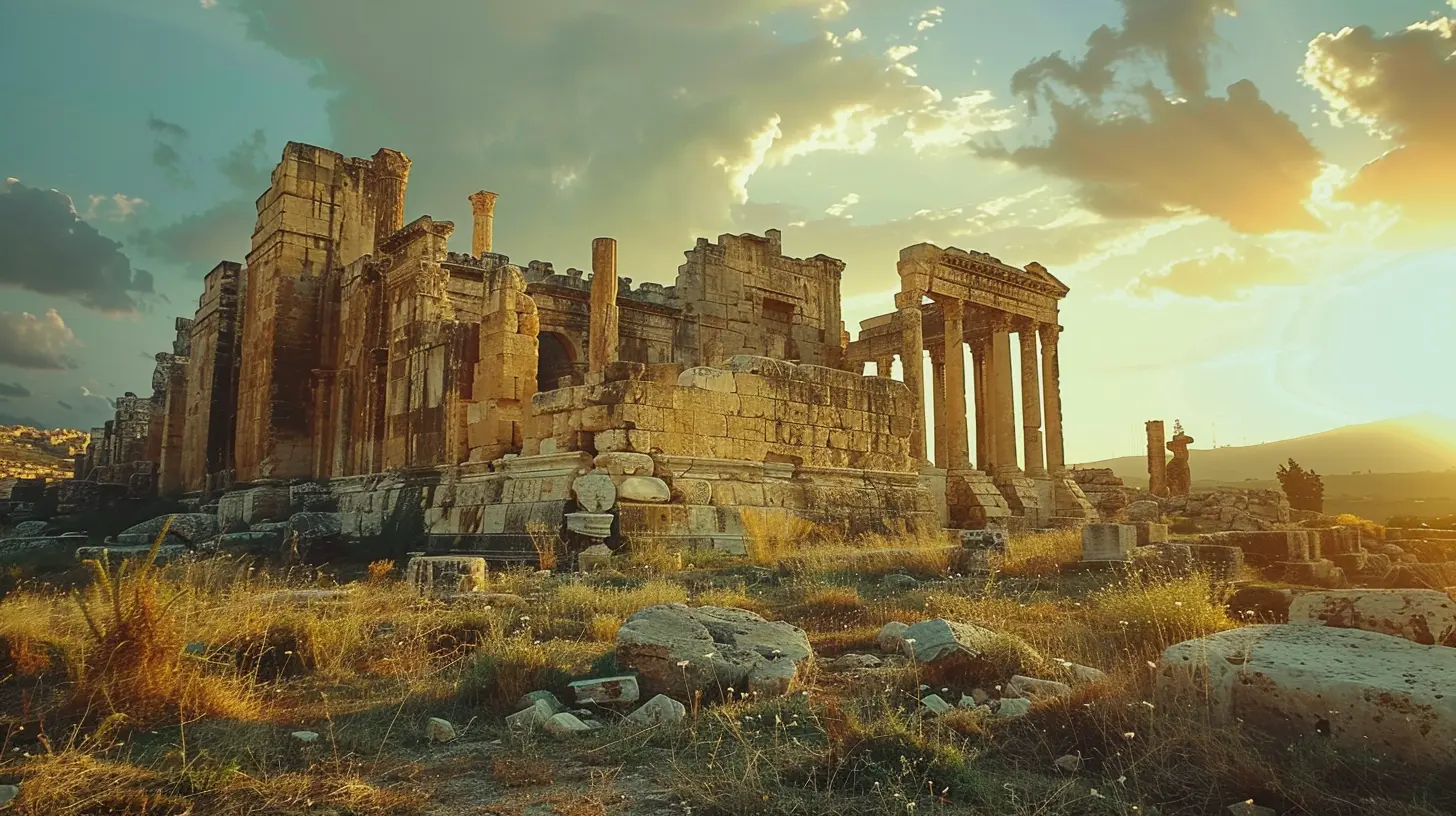The Ruins of Baalbek: Ancient Rome’s Temple of the Gods
27 April 2025
Imagine walking through a place where ancient gods were once worshipped, where Roman emperors left their mark, and where time has stood still for thousands of years. That’s exactly what you experience when you visit the awe-inspiring ruins of Baalbek, one of the most extraordinary archaeological sites of the ancient world. Nestled in Lebanon’s Beqaa Valley, this lost city speaks volumes about the power, ambition, and architectural prowess of the Roman Empire.
But what makes Baalbek so special? And why do historians and travelers alike marvel at its grandeur? Let’s take a deep dive into the history, architecture, and significance of this ancient wonder. 
A Glimpse into Baalbek’s History
Long before the Romans came, Baalbek was already a sacred site. The Phoenicians, one of the earliest civilizations in the region, dedicated the area to their god Baal, the supreme deity of storms and fertility. You can think of Baalbek as an ancient power spot, much like Stonehenge or the pyramids of Egypt.Then came the Greeks, who renamed it Heliopolis, meaning “City of the Sun.” But it was the Romans who truly transformed Baalbek into the magnificent temple complex we marvel at today. Under the emperors from Augustus to Caracalla, they built some of the grandest religious structures ever seen. From colossal temples to magnificent stone courtyards, everything was designed to honor their gods in spectacular fashion.
Yet, for all its glory, Baalbek suffered centuries of neglect, invasions, and earthquakes. What remains now are ruins that still manage to capture the imagination—proof that some legacies refuse to fade away. 
The Temple of Jupiter: An Architectural Marvel
If there’s one structure that defines Baalbek, it’s the Temple of Jupiter. This wasn’t just another Roman temple—it was the grandest of them all. Think of it as the Empire’s version of a skyscraper, meant to outshine every religious monument before it.Mind-Blowing Facts About the Temple of Jupiter
- Giant Columns: The temple originally boasted 54 Corinthian columns, each 20 meters (66 feet) tall. That’s taller than a six-story building!- Massive Stones: Some of the largest stones ever used in construction still exist here, including the famous "Stone of the Pregnant Woman", weighing over 1,000 tons. How the Romans managed to transport and lift these stones remains one of history’s most baffling engineering mysteries.
- A Temple for the Gods: Dedicated to Jupiter, the king of Roman gods, this temple was the heart of religious practices, offering grand sacrifices and celebrations.
Standing beneath these towering ruins, you can almost hear the echoes of ancient chants and rituals. Even today, the temple’s remains are enough to leave visitors in sheer awe. 
The Temple of Bacchus: The Best-Preserved Roman Temple
While Jupiter’s temple might have been the largest, the Temple of Bacchus is the best-preserved. In fact, it’s considered one of the most intact Roman temples in the world!So, who was Bacchus? You might know him as the god of wine, pleasure, and festivities. This explains why his temple is adorned with intricate carvings of vines, grapes, and wild celebrations. Imagine an ancient version of a lavish banquet hall, where Romans honored their gods with endless feasts.
Unbelievable Details About the Temple of Bacchus
- Size Matters: The temple is larger than the Parthenon in Athens, making it one of the largest surviving Roman temples.- Ornate Artwork: The temple’s walls are decorated with detailed carvings depicting mythological scenes and Roman symbolism, capturing a time when gods and humans were intertwined in daily life.
- Mysterious Purpose: Some believe Bacchus' temple was actually dedicated to another deity, but since the god of wine was so popular, the name stuck.
Walking through the temple feels like stepping into a time capsule. The details, the symmetry, and the grandeur—it all makes you wonder: How did they manage to build something so stunning without modern tools? 
The Temple of Venus and Other Hidden Wonders
Baalbek doesn’t stop impressing with just Jupiter and Bacchus. There’s also the Temple of Venus, an elegant circular temple believed to have been a shrine to a goddess of love and beauty. Though it’s smaller, it’s no less fascinating.Then there’s the lesser-known Temple of Mercury, which once stood tall but has now crumbled into ruins. Even so, traces of its past glory can still be found among the scattered stones.
Each temple tells its own story, offering pieces of a grand puzzle that historians are still piecing together.
The Mysteries of Baalbek: Who Built It First?
One of the most debated topics about Baalbek is its origins. While the Romans built the temples we see today, some believe an even older civilization was responsible for the site's original foundation.Theories That Keep Historians Up at Night
- Pre-Roman Megaliths: The massive stone blocks found at Baalbek’s base hint that an ancient civilization, possibly even older than the Phoenicians, may have started construction.- Lost Knowledge: Some suggest that advanced engineering techniques, now lost to history, were used to move these gigantic stones.
- Alien Theories? As with any mysterious ancient site, there are those who believe extraterrestrials played a role. While this is pure speculation, it does highlight just how mind-blowing the ruins are.
Regardless of the theories, one fact remains—Baalbek is a testament to human ingenuity and ambition.
Visiting Baalbek Today: What to Expect
If you’re planning a trip to Baalbek, you’re in for an unforgettable experience. Here’s what you need to know:Best Time to Visit
Lebanon’s weather can be extreme, so the best time to visit is during spring (March-May) or autumn (September-November), when temperatures are mild and the landscape is at its most beautiful.How to Get There
Baalbek is about a 2-hour drive from Beirut, Lebanon’s capital. Whether you rent a car, take a guided tour, or hop on a local bus, the journey through the scenic Beqaa Valley is an adventure in itself.Must-Bring Essentials
- Comfortable shoes (you’ll be walking on uneven terrain).- A camera (trust me, you’ll want to capture every detail).
- A guidebook or tour guide (understanding the history makes the visit way more meaningful).
Local Delights
Don’t leave without trying some delicious Lebanese food in the nearby town. Treat yourself to a steaming plate of kibbeh, some fresh hummus, or a refreshing glass of arak, Lebanon’s traditional anise-flavored drink.Final Thoughts: Why Baalbek Should Be on Your Bucket List
Baalbek isn’t just a collection of ancient stones—it’s a monument to human ambition, creativity, and spiritual devotion. Walking among its soaring columns, you can almost hear the whispers of the past, telling stories of emperors, priests, and worshippers who once stood in the same spot.So, if you’re a history lover, an adventure seeker, or simply someone who appreciates breathtaking sights, Baalbek is a must-visit. You won’t just see ruins—you’ll connect with a past that still lingers in every carved stone and towering column.
After all, how often do you get to stand in a temple built for the gods?
all images in this post were generated using AI tools
Category:
Ancient RuinsAuthor:

Pierre McKinney
Discussion
rate this article
4 comments
Otis Black
Visiting the Ruins of Baalbek is like stepping into an ancient Instagram filter—everything looks stunning and steeped in history! Just remember, the only thing more impressive than the temple's columns is how much wine you can sip while pretending to be a Roman god!
May 10, 2025 at 4:01 PM

Pierre McKinney
Thank you for your creative take! Baalbek truly feels like a portal to the past, blending majestic history with the pleasure of modern indulgence. Enjoy the journey!
Rosanna Baker
Visiting the ruins of Baalbek is a transformative experience. The sheer scale and grandeur of the temples evoke a deep appreciation for ancient craftsmanship and history. As I wandered through the remnants of this once-great site, I felt a profound connection to the past and an understanding of humanity's enduring quest for the divine.
May 9, 2025 at 2:28 AM

Pierre McKinney
Thank you for sharing your experience! Baalbek truly embodies the magnificence of ancient craftsmanship and its connection to humanity's spiritual journey.
Iris Hernandez
Baalbek’s majestic ruins illustrate the grandeur of Roman engineering and its cultural significance. However, amidst its awe-inspiring architecture lies a narrative of historical conquest and transformation, urging visitors to reflect on the complex interplay between civilization, preservation, and modern tourism’s impact on heritage.
May 4, 2025 at 4:37 PM

Pierre McKinney
Thank you for your insightful comment! Baalbek indeed serves as a powerful reminder of the intricate relationship between history, culture, and modern tourism.
Rune Sanchez
Baalbek's grandeur transcends time, showcasing ancient engineering marvels and a rich tapestry of cultural history that captivates every visitor.
May 2, 2025 at 4:25 AM

Pierre McKinney
Thank you! Baalbek truly is a testament to the extraordinary skill and cultural heritage of ancient civilizations.



